How to Grow Lettuce for Beginners
If you are looking for tips on How to Grow Lettuce for Beginners you are in the right place. Another great veggie to add to your Gardening 101, list that you can use to grow all the food you need in your own backyard.
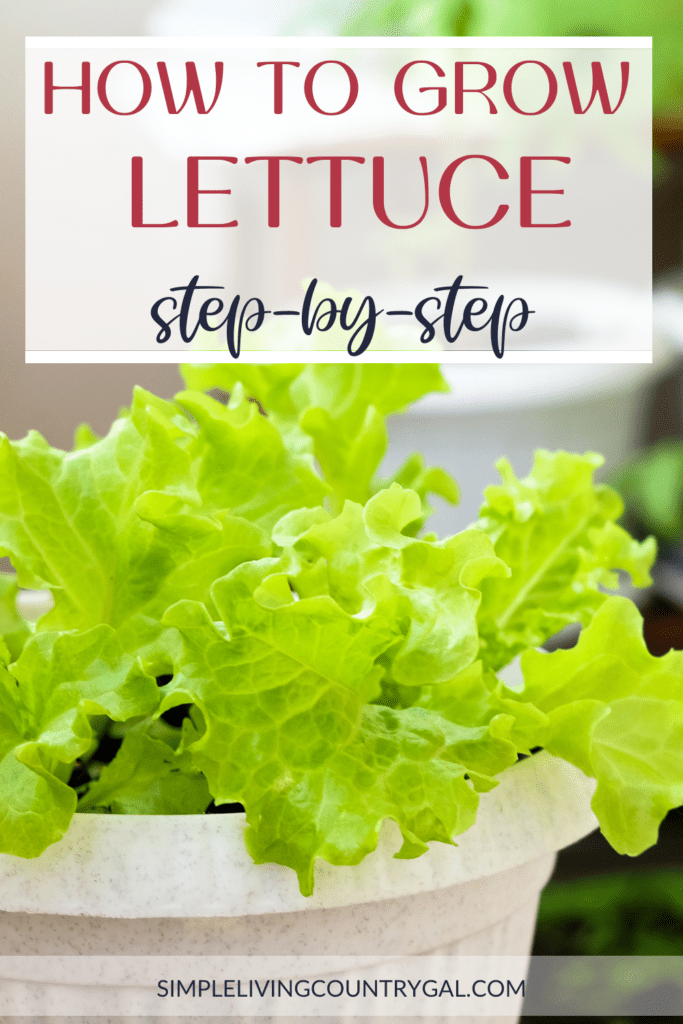
Lettuce can be one of the best crops you can grow in your garden because it is fast, super easy to grow, and tastes amazing. If you and your family are a fan of salads you can plant a patch once and fill your dinners with fresh greens all summer long. This is not only convenient but will save you a nice amount on your grocery bills as well.
How to Grow Lettuce for Beginners
Lettuce (Lactuca sativa) is an annual vegetable that grows quickly, usually in 5 to 8 weeks, and there are hundreds of varieties to choose from. Many of those varieties will allow you to just harvest a few leaves at a time so that you can enjoy a fresh salad whenever you want. It’s also the perfect addition to a beginner garden as it’s fairly easy to grow and provides a bountiful harvest.
Lettuce is a cool-season vegetable best planted in early spring and harvested in late spring to early summer. You can also plant a second crop in the fall if you’d like.
One nice thing about lettuce is that it grows above ground with somewhat shallow roots so it can easily be grown in raised beds or containers if space is limited or your soil isn’t well-suited.
There are several varieties available, making it easy to plant a few different ones for a variety of salads. Lettuce is high in potassium, fiber, and Vitamin C.
Some of the most common types of lettuce to choose from include:
· Looseleaf – one of the easiest types to grow, it’s ready to harvest in 5 to 6 weeks, and forms large loose heads.
· Romaine – most commonly known for Caesar salads but also a great addition to sandwiches, it forms tight, upright heads with very crisp leaves.
· Iceberg – a common variety for salads and sandwiches, the perfect addition to a BLT, with crisp heads.
· Oakleaf – this variety has both green and red leaves and will form into loose heads. You can easily harvest just a few leaves from a head with this variety.
· Butterhead – also known as Bibb or Boston lettuce, forms loose heads of soft but crips leaves. This variety has both heat tolerant varieties for growing in the summer and cold tolerant varieties for winter harvesting.
· Summer Crisp – this variety starts out looking like a looseleaf variety but as it matures it forms a more rounded head. There are several heat tolerant varieties that are perfect for a summer garden.
Seed, Bulb, or Plant?
Lettuce starts as a seed that germinates in temperatures as low as 40° F but the ideal temperature for germination is between 60° and 65° F. Because it germinates so quickly, seeds will work just fine in your backyard garden.
What You Need to Grow Lettuce
For growing lettuce, you’ll first want to make sure you’re planting in the right season. Late spring and early fall are usually the best times for most varieties. You’ll also want well-nourished, well-draining, loamy soil with a pH between 6 and 7.
If your soil isn’t suitable, you may want to think about planting in a raised bed or in a garden container. And you’ll want to plant in a spot that receives plenty of sunshine, about 6 to 8 hours a day.
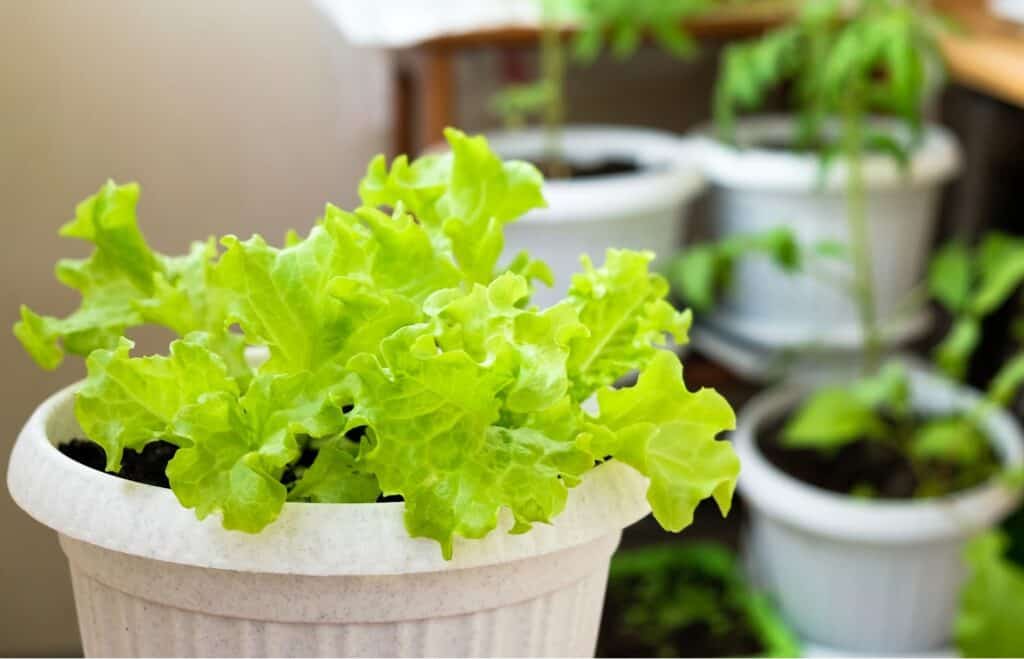
When to Plant Lettuce
Soil temperature is very important for proper seed germination of lettuce. You can start planting as soon as the soil can be worked in the spring, however, different varieties require varying soil temperatures so be sure to check your seed packet. Most will need the soil to be at least 40° F while others can tolerate temperatures up to 85° F. The ideal soil temperatures for growing lettuce in your garden usually range between 60° and 65° F.
You may also want to plant lettuce in succession with 10 to 14 days between planting, for an extended harvest.
To prevent summer bolting, stop planting at least one month before the start of warm summer temperatures. For fall lettuce, start planting in late summer so that it has time to mature in the cool fall temperatures.
Head lettuces can be started indoors or in a cold frame and transplanted in the spring after the last frost to speed up the growing season.
Temperature
Lettuce prefers cooler temperatures, although there are some varieties that do well in the heat. For most varieties, plan on planting in late spring, after the last frost, for early summer harvesting then again in late summer for fall harvesting. The soil will need to be at least 40° F to germinate the seeds, but temperatures in the mid-60s are preferred.
Sun
Lettuce does best in full sun although it will still grow quite well in partial shade. Try to plant in an area that receives at least 6 hours of sunlight per day to produce a healthy harvest.
Soil
The soil needs to be loamy and well-draining with a pH of 6 to 7. You may need to add nutrients to your soil with compost. If so, do this about a week before planting. You will also need a well-tilled seedbed, free of rocks and large clods, to plant the tiny seeds and allow them space to germinate.
Rotating your planting site year to year will help to reduce most diseases.
Water
Lettuce has shallow roots that need to be watered regularly. Give the soil a good soak when you plant the seeds to help them germinate then continue to check the soil at least 2-3 times a week. If it is dry down to 1” deep, you will need to water. The goal is to keep the soil moist but not overly wet. Planting in raised beds or containers usually requires more frequent watering.
Fertilizing
Plan to fertilize about 3 weeks after transplanting seedlings or 4 to 5 weeks after planting seeds. Lettuce thrives in soil that is high in organic matter with plenty of compost and a regular supply of nitrogen. This will help to keep it growing quickly.
A slow-release fertilizer will help to keep it fertilized without too much extra work.
Support
As lettuce grows at ground level and only to about 8” to 12” high depending on the variety, you won’t need to plan for a support system.
How Much to Plant
Plan on growing 6 to 10 plants per person in your household. Planting succession crops will help to ensure that you have a constant harvest over the growing season.
When to Plant
Planting in late spring for early summer harvest or late summer for early fall harvest is best. Starting seedlings indoors and transplanting to the garden after the last frost of spring is a good option to get your lettuce growing faster. And planting lettuce in succession with 10 to 14 days between plantings will help you enjoy a continuous supply.
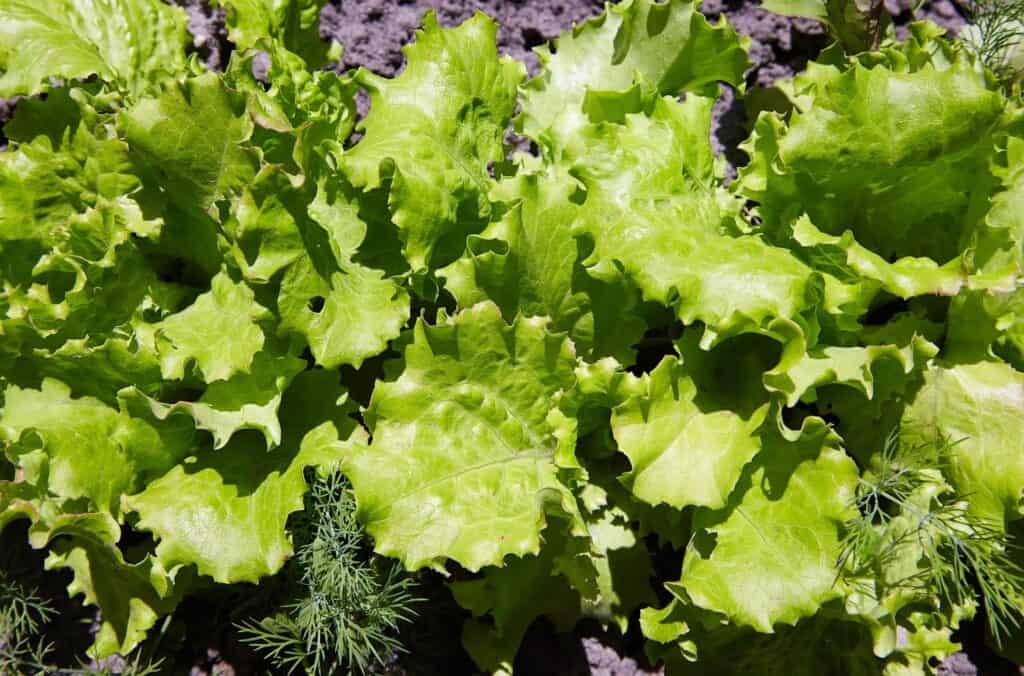
How Long Does Lettuce Take to Grow?
Depending on the variety, lettuce plants take anywhere from 5 to 8 weeks to fully mature. Check the seed packet for guidelines on the variety you choose to plant.
How to Plant Lettuce
Lettuce seeds are tiny and don’t require a lot of depth, but the soil will need to be free of rocks and dirt clods. You will also need to grow in rows so take that into consideration when preparing the bed.
Spacing
When sowing seeds directly into the soil, plant about 10 seeds per foot. Space your rows about 12” to 18” apart. Once the seeds start to germinate and sprout, thin the seedling down to 4” apart. Romain and Butterhead varieties will need a little more spacing, about 6” to 8” apart.
The seedlings you remove can be transplanted or enjoyed as microgreens.
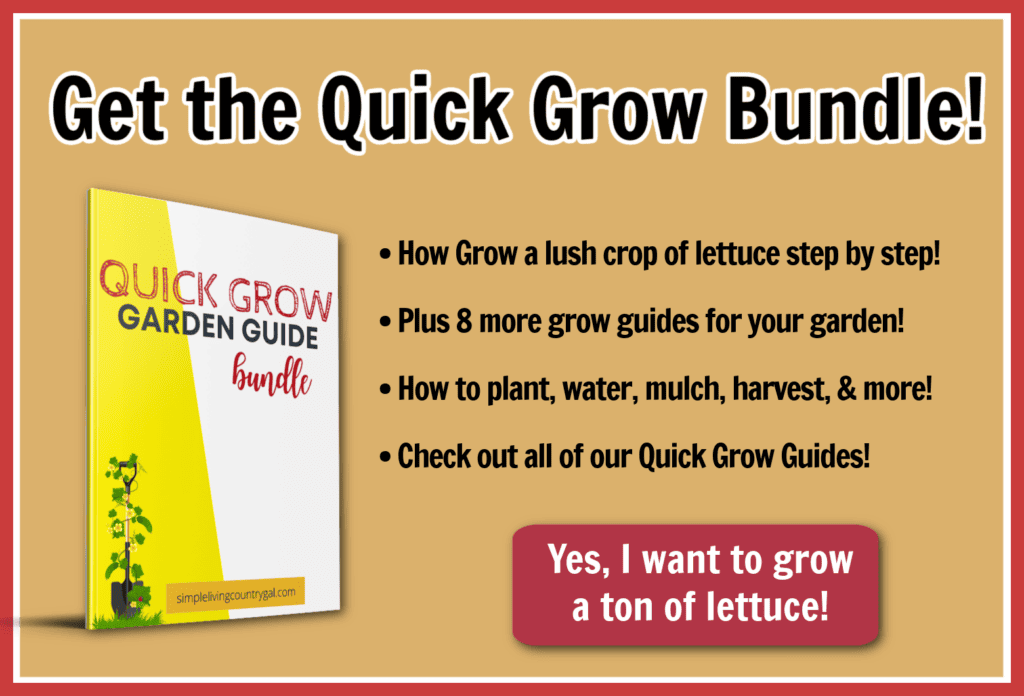
Depth
Lettuce plants have shallow roots so they don’t need to be planted too deep, about ¼” to ½” deep is plenty.
Growing Tips for Lettuce
· Growing lettuce heads close together will help to reduce some common pests like aphids.
· Lettuce grows well in containers so it’s perfect for gardeners with little space. Window boxes, pots, baskets, and fabric planters are all good options since the root system is shallow. You’ll just need a container that is 4” to 6” deep and has drainage holes.
· Early spring garden beds can be covered with garden fabric or plastic-covered tunnels to capture solar energy and protect the plants from cool temperatures and frost.
· Succession planting is a great option for keeping your garden producing lettuce throughout the growing season instead of all at once. Just plant a few seeds then plant again every 10 to 14 days.
· To protect from diseases, rotate your planting area every year, and don’t replant an area for at least 3 years.
· To plant in late summer for a fall crop, you can cool the soil by moistening the ground and covering it with a bale of straw. This will drop the soil temperature about by about 10° F within a week.
· Lettuce doesn’t compete well with weed growth but spacing the lettuce heads close together will help to control any weeds.
· Lettuce will let you know when it needs to be watered. If the leaves are wilting, sprinkle them anytime to cool them from the sun on a hot day. Row covers can also help to keep the heads from drying out on a hot day.
· Organic mulch will help to converse water, suppress weed growth, and keep the soil cool when the temperatures heat up.
· Bolting is a common problem caused by warm temperatures or changes in the amount of sunlight. This can cause the leaves to become bitter. To delay bolting, cover the plants with shade cloth so they receive filter light, not direct light, and maintain watering during the hottest days. Keeping the lettuce slightly shaded by taller plants such as tomatoes or corn will also help to reduce bolting.
· Some varieties allow you to harvest just a few leaves at a time instead of the entire head, providing you with just what you need at any given time.
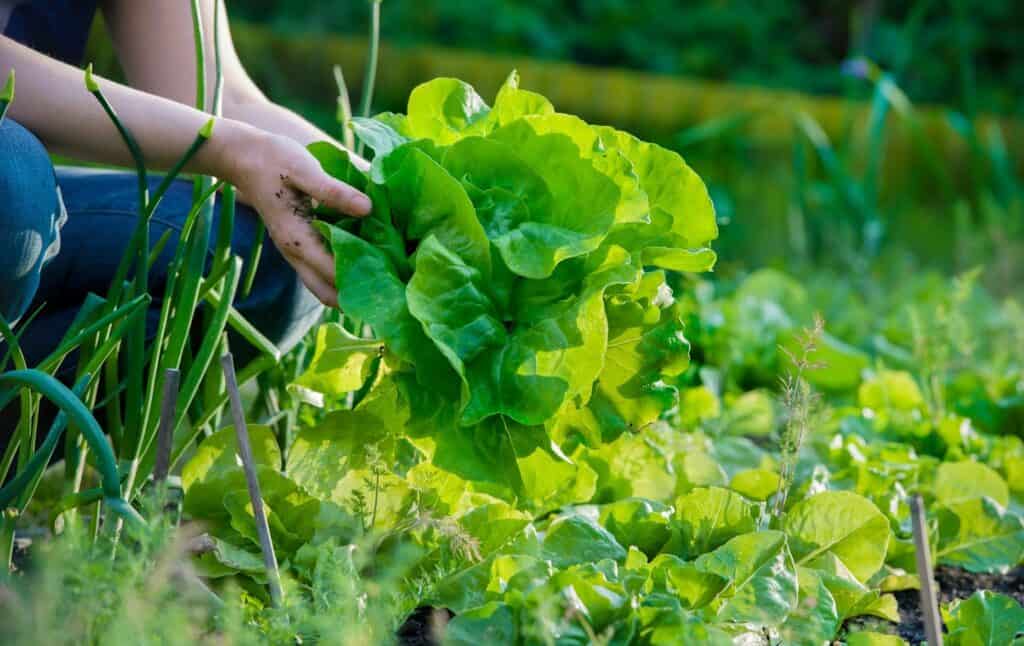
How to Harvest Lettuce
Lettuce is best harvested in the morning before the sun causes it to wilt. For harvesting just a few leaves at a time, you can harvest the outer leaves when they become about 6” long. Trim off the outer leaves leaving the inner leaves to continue maturing.
Full heads should be harvested when they are full size but just before maturity by slicing it off about an inch above the soil. The leaves will start to taste bitter if they’re left to mature too long. As your crop gets close to maturity, check it daily and harvest the heads that are ready.
If the leaves have started to wilt, after harvesting place the leaves in a bowl of cold water with ice cubes for about 10 minutes.
How to Store Lettuce
Lettuce is best stored in a plastic bag in the refrigerator. Fresh lettuce will last up to about 8 to 10 days. A crisper storage container with a carbon filter can also help to keep your lettuce fresh and crisp.
Diseases and Pests to Watch Out For
There are a few pests and diseases to keep an eye out for including:
· Aphids cause leaves to curl and wilt, sucking away nutrients and water. They also spread disease and create mold issues. They hide on the underside of the leaves. Encouraging natural predators like lady beetles can help or you can apply horticultural soap or neem oil.
· Snails, slugs, and caterpillars love lettuce gardens too. Organic bait, traps, or hand-picking them off are good natural solutions.
· Tipburn causes the leaves to brown and curl and is usually caused by an inconsistent moisture level. Trim the brown leaves and start watering more consistently.
· Deer and rabbits are also fans of lettuce gardens. Chicken wire, netting, or tunnels can help reduce their late-night snacking.
With so many varieties to choose from and all of them growing fairly quickly, lettuce is a great option for beginner gardeners. You can continue to receive a regular and steady harvest throughout the growing season and grow twice a year, allowing yourself the opportunity to try different varieties to see what you like best.
And since it’s so easy to grow lettuce for beginners and can be grown in both larger gardens as well as containers, it’s the perfect crop for anyone starting a garden.
